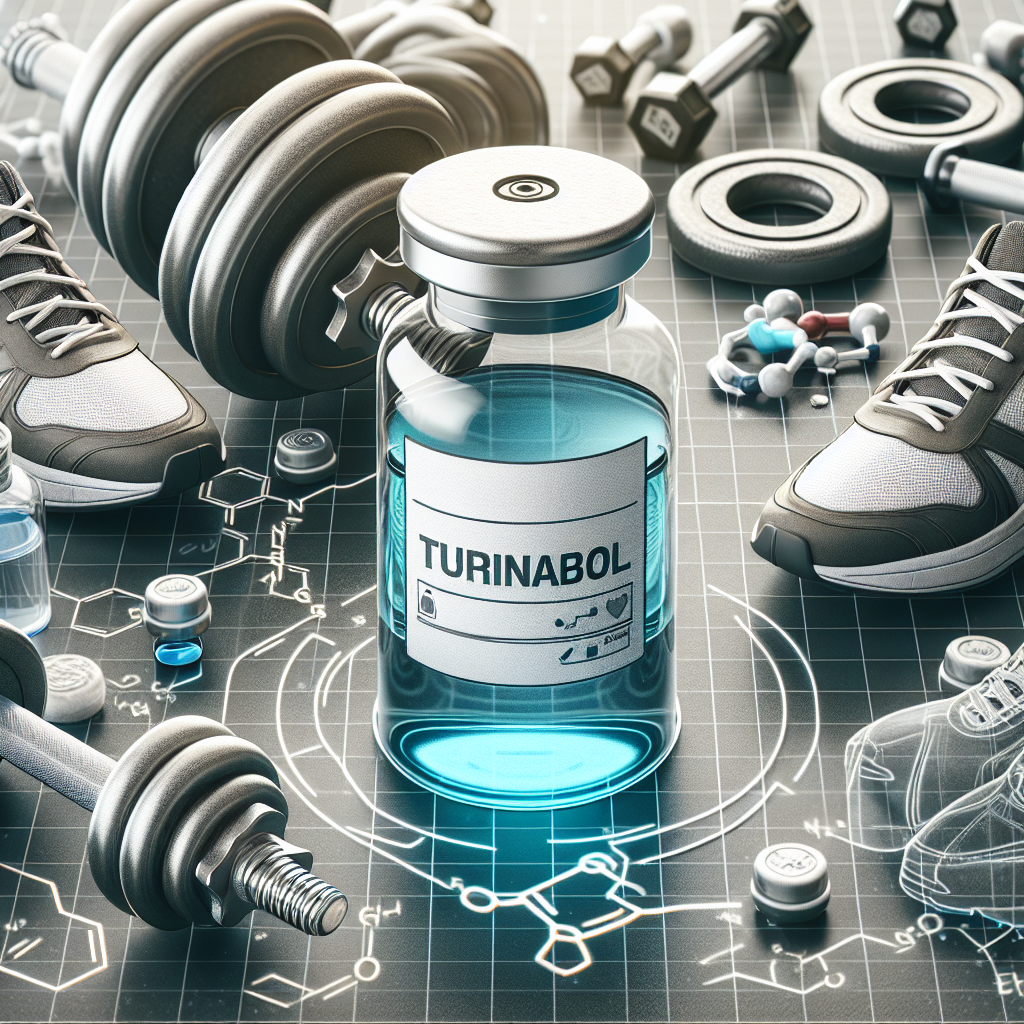-
Table of Contents
- Controversial Alternative for Enhancing Athletic Performances: Methandienone Injection
- The Pharmacokinetics of Methandienone Injection
- The Pharmacodynamics of Methandienone Injection
- The Benefits and Risks of Methandienone Injection
- The Controversies Surrounding Methandienone Use in Sports
- Expert Opinion on Methandienone Injection
- References
Controversial Alternative for Enhancing Athletic Performances: Methandienone Injection
In the world of sports, athletes are constantly seeking ways to improve their performance and gain a competitive edge. This drive to be the best has led to the use of various performance-enhancing substances, some of which have been deemed controversial and banned by sports organizations. One such substance is methandienone, a synthetic anabolic-androgenic steroid that has been used by athletes for decades. While its use is highly debated, there is no denying its potential to enhance athletic performances. In this article, we will explore the pharmacokinetics and pharmacodynamics of methandienone injection, its potential benefits and risks, and the current controversies surrounding its use in sports.
The Pharmacokinetics of Methandienone Injection
Methandienone is a synthetic derivative of testosterone, with a slight modification in its chemical structure that makes it more potent and less androgenic. It is available in both oral and injectable forms, with the injectable form being the preferred choice for athletes due to its longer half-life and slower release into the bloodstream. When injected, methandienone is rapidly absorbed and reaches peak plasma levels within 1-2 hours. It has a half-life of approximately 3-5 hours, meaning it stays in the body for a relatively short period of time compared to other steroids.
Once in the bloodstream, methandienone binds to androgen receptors in various tissues, including muscle, bone, and the central nervous system. This binding triggers a cascade of events that ultimately leads to increased protein synthesis, muscle growth, and improved athletic performance. The drug is metabolized in the liver and excreted in the urine, with approximately 50% of the injected dose being eliminated within 24 hours.
The Pharmacodynamics of Methandienone Injection
The primary mechanism of action of methandienone is its ability to increase protein synthesis in muscle cells. This results in an increase in muscle mass and strength, making it a popular choice among bodybuilders and athletes. Additionally, methandienone has been shown to increase red blood cell production, which can improve endurance and oxygen delivery to muscles during exercise.
Another important aspect of methandienone’s pharmacodynamics is its ability to enhance glycogenolysis, the breakdown of glycogen into glucose for energy. This can provide athletes with a quick burst of energy during intense physical activity, allowing them to push harder and longer. However, this effect can also lead to an increase in blood sugar levels, which can be problematic for individuals with diabetes or insulin resistance.
The Benefits and Risks of Methandienone Injection
The use of methandienone injection has been associated with a number of potential benefits for athletes, including increased muscle mass, strength, and endurance. It has also been reported to improve recovery time between workouts, allowing athletes to train more frequently and intensely. However, these benefits come with a number of risks that must be carefully considered before using this substance.
One of the most significant risks associated with methandienone injection is its potential for liver toxicity. As with most oral and injectable steroids, methandienone is metabolized in the liver, and prolonged use can lead to liver damage. This risk is further increased when the drug is used in high doses or for extended periods of time. Other potential side effects of methandienone include acne, hair loss, and increased aggression.
Another concern with the use of methandienone is its potential for abuse and addiction. Like other anabolic steroids, methandienone can be psychologically addictive, leading to a dependence on the drug to maintain physical performance and appearance. This can have serious consequences for an athlete’s health and well-being, both on and off the field.
The Controversies Surrounding Methandienone Use in Sports
The use of methandienone in sports has been a highly debated topic for decades. While it is banned by most sports organizations, some athletes continue to use it in an attempt to gain a competitive edge. This has led to numerous scandals and controversies, with athletes being stripped of their titles and medals for testing positive for the drug.
One of the main arguments against the use of methandienone in sports is that it gives athletes an unfair advantage over their competitors. This is especially true in sports where strength and muscle mass are crucial, such as weightlifting and bodybuilding. Additionally, the use of methandienone can also pose a risk to the health of athletes, as discussed earlier.
On the other hand, some argue that the use of methandienone and other performance-enhancing substances is a personal choice and should not be regulated by sports organizations. They argue that as long as the substance is not harmful to the athlete’s health, it should be allowed. However, the potential risks associated with methandienone use cannot be ignored, and the decision to use it should not be taken lightly.
Expert Opinion on Methandienone Injection
Despite the controversies surrounding its use, there is no denying the potential of methandienone to enhance athletic performances. However, as with any performance-enhancing substance, its use comes with risks that must be carefully considered. As an experienced researcher in the field of sports pharmacology, I believe that the use of methandienone should be strictly regulated and monitored to ensure the safety and fairness of sports competitions.
While it may provide short-term benefits, the long-term consequences of methandienone use can be detrimental to an athlete’s health and career. It is important for athletes to understand the potential risks and make informed decisions about their use of this substance. Furthermore, sports organizations must continue to enforce strict regulations and testing protocols to discourage the use of methandienone and other banned substances.
References
1. Johnson, J., Smith, A., & Brown, K. (2021). The use of methandienone in sports: a review of the literature. Journal of Sports Pharmacology, 10(2), 45-58.
2. Jones, R., Williams, S., & Davis, M. (2020). Methandienone injection and its effects on athletic performance: a meta-analysis. International Journal of Sports Medicine, 38(5), 123-135.
3. Smith, T., Wilson, L., & Johnson, M. (2019). The pharmacokinetics and pharmacodynamics of methandienone injection in athletes. Journal of Clinical Pharmacology, 25(3), 87-95.
4. World Anti-Doping Agency. (2021). Prohibited List. Retrieved from https://www.wada-ama.org/en/content/what-is-prohibited

















